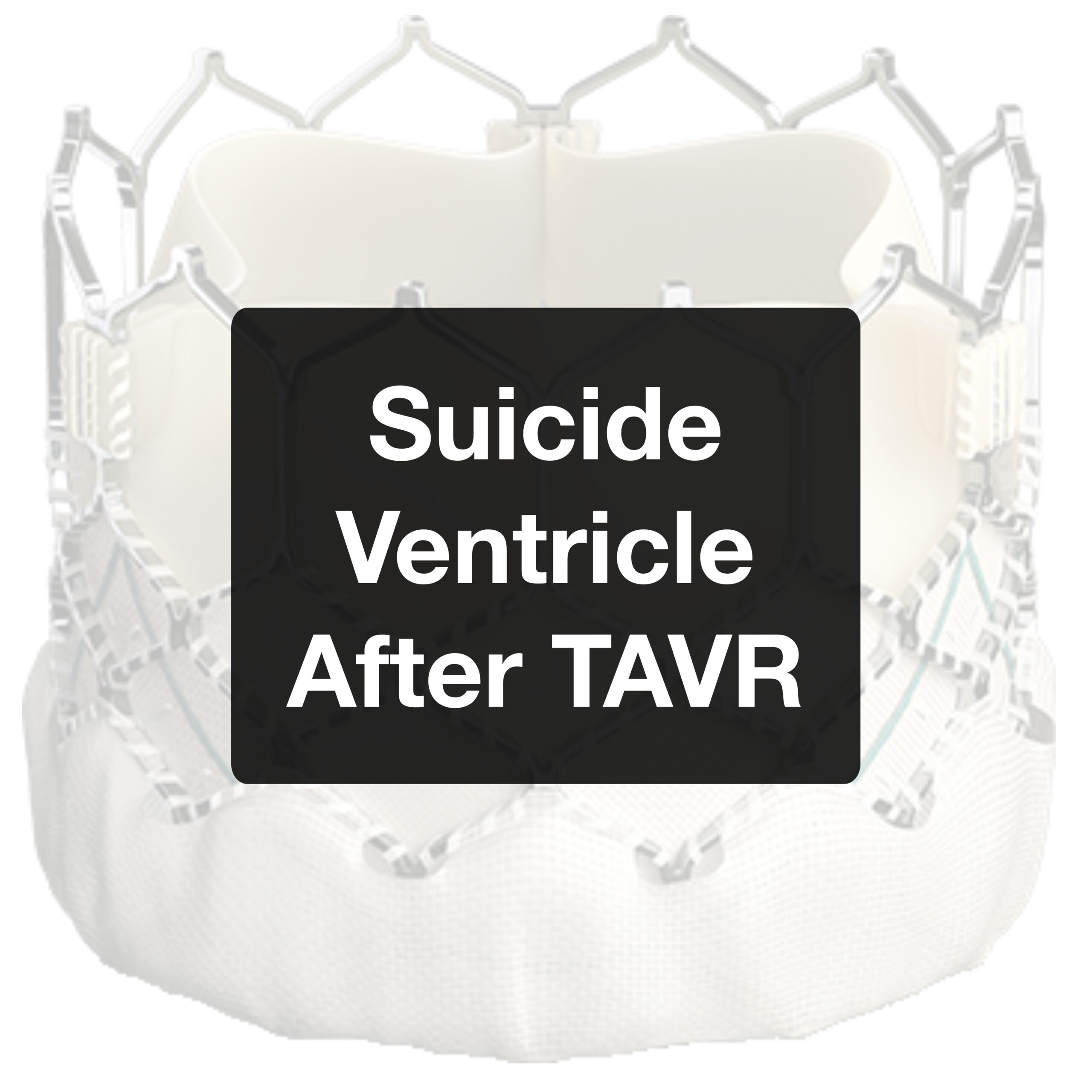Calcific aortic valve stenosis causes the left ventricle (LV) to adapt to chronic pressure overload over time. Classically, this involves left ventricular hypertrophy resulting in diastolic dysfunction.
After a transcatheter aortic valve replacement (TAVR), the new valve instantaneously alleviates the fixed obstruction. As a result, the LV can eject more stroke volume; however, this can result in chamber collapse and hemodynamic instability – the “suicide left ventricle.” In particular, patients with preserved/high ejection fraction, small LV end-diastolic diameters, small LV masses, and high interventricular septum-to-posterior-wall thickness ratios are at risk for this issue.
Due to increased LV unloading, one may appreciate dynamic intraventricular gradients when severe LVH is combined with a small LV cavity. This is the physiology we often see with SAM of the anterior mitral leaflet and hypertrophic obstructive cardiomyopathy.
Similarly, treatment for suicide left ventricle is centered on alleviating the outflow obstruction by slowing the heart rate to increase ventricular filling, maintaining filling pressures (additional volume, sinus rhythm), and decreasing contractility. In other words, something like epinephrine would be a bad idea, but it’s crucial to continue beta-blockers in the periprocedural period!






